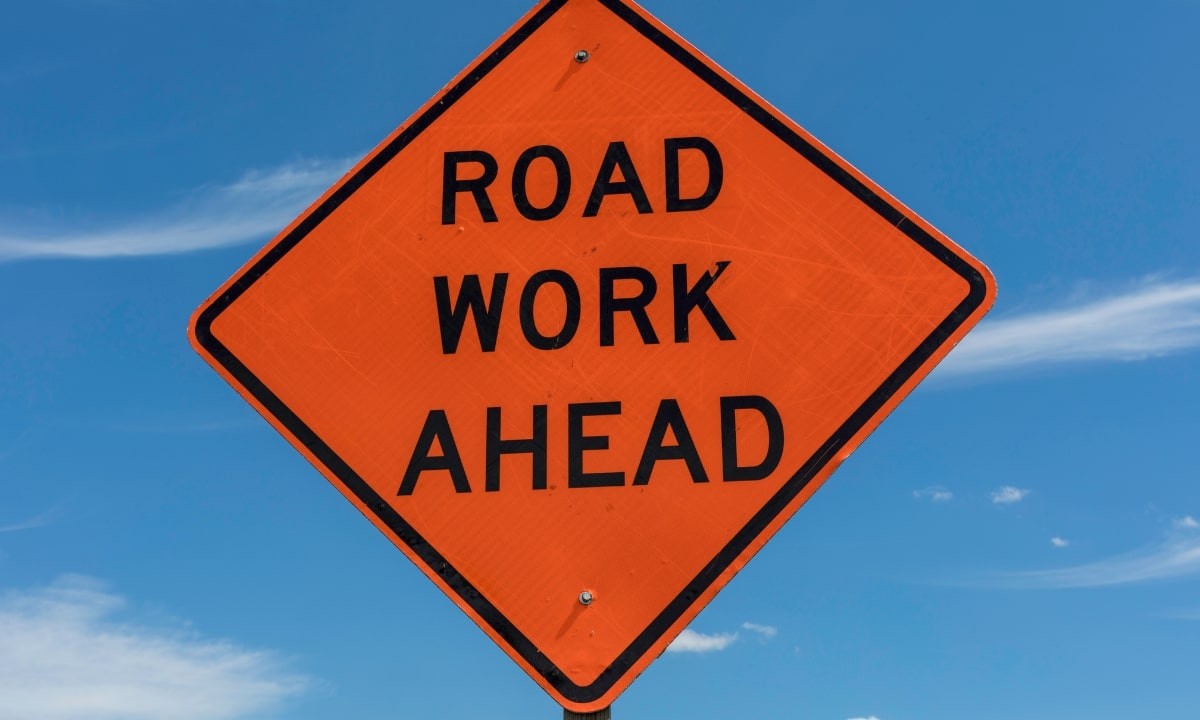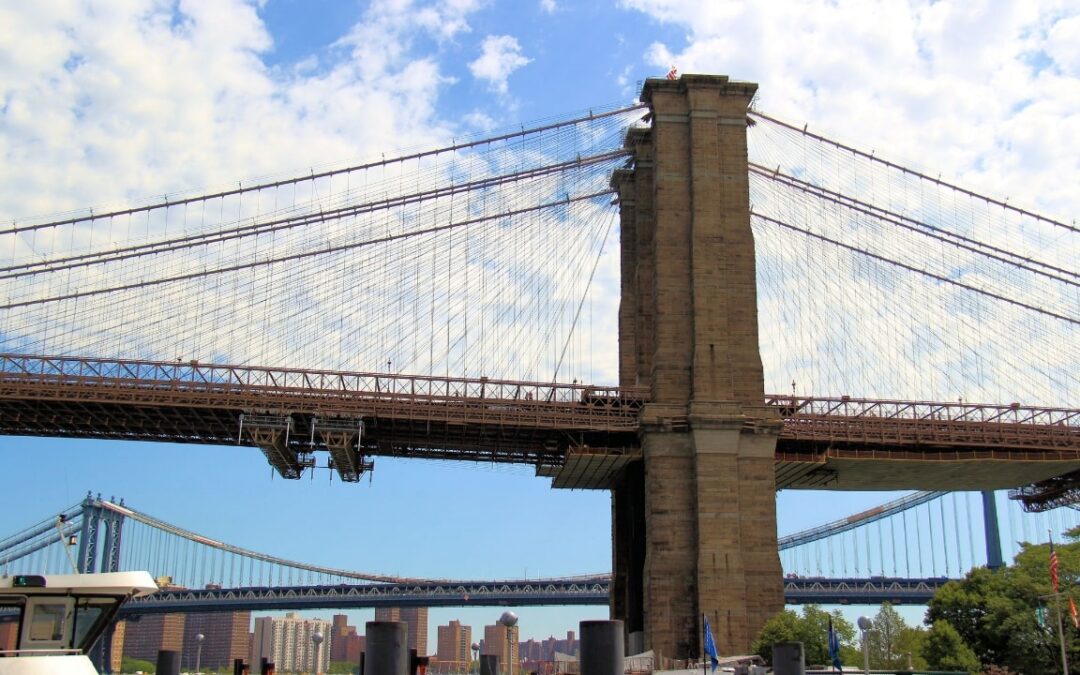The iconic image of a majestic bridge silhouetted against the horizon evokes awe and admiration. But beneath the breathtaking aesthetics lies a complex infrastructure subject to relentless wear and tear.
From the pounding of heavy vehicles to the harsh embrace of weather to the minor abrasions and even collisions that occur, bridges endure a constant battle against time and the elements. Let’s delve into the diverse factors that contribute to highway bridge wear and tear, and explore the intricate dance between routine inspections and necessary repairs.

Road Closed Due to Bridge Repairs
Quite often, routine inspections will identify seemingly minor damage to highway bridges that subsequently lead to temporary bridge closure and scheduling repairs or even reconstruction in some cases.
Take the recent case of the Las Vegas Boulevard closure in Las Vegas, Nevada, for example. According to a news story from the KVUU-TV website,
“Damage to the I-15 bridge in Apex is forcing the Nevada Department of Transportation to close roads for reconstruction. Long-term closures will start in February and is expected to last until late April. This will impact Las Vegas Boulevard under I-15 and associated on and offramps.
Officials say they will lower Las Vegas Boulevard and reconstruct ramps. ‘Due to the damage to the I-15 bridge by high-load impacts, structural repair was deemed appropriate and necessary,’ NDOT says. With the road lowered, officials say the minimal height clearance will be increased and could reduce future impacts.”
While not every bridge repair requires a road closure, when the damage requires more than a “patching and grouting” repair, commuter and trucking disruptions can occur. In the case of the I-15 bridge over Las Vege Boulevard, for example, the closures are expected to be limited to just over two months.
Understanding the Enemy: Multiple Players in Bridge Deterioration
Bridges face a multitude of adversaries, each exerting its own form of pressure. While the list can be lengthy, here are the top six factors contributing to the wear and tear of bridges:
- Traffic loads: The weight and constant vibration of vehicles, particularly heavy trucks, exert significant stress on bridge components, accelerating wear and tear.
- Environmental factors: Weather plays a major role. Rain, snow, and ice accumulation add weight and promote corrosion. Freeze-thaw cycles can cause concrete to crack and crumble. Extreme temperatures can expand and contract materials, leading to stress and fatigue.
- Seismic activity: Even minor earthquakes can trigger cracks and loosen connections, compromising structural integrity.
- Material fatigue: Over time, even the most robust materials can weaken and lose their ability to withstand stress. Steel can experience metal fatigue, while concrete can lose its integrity through micro-cracking.
- Design and construction flaws: Faulty design choices or construction errors can leave inherent weaknesses in the bridge, making it more susceptible to deterioration.
- Neglect and deferred maintenance: Failing to address minor issues like leaks or spalling concrete can escalate into more extensive and costly repairs later.
The Role of Inspections: Identifying Threats and Triggering Repairs
Regular inspections are the frontline defense against bridge failure. These comprehensive assessments, conducted by qualified engineers, play a crucial role in several functions. These include identifying visible damage, in which inspectors meticulously examine the bridge for cracks, spalling, corrosion, loose rivets, and other signs of wear and tear.
Advanced techniques like ultrasonic testing or X-rays can allow inspectors to assess internal damage and hidden weaknesses and valuate structural integrity. By keeping track of the progression of cracks or other issues, bridge inspectors can allow for timely intervention before they become critical. In addition, these routine inspections provide for assessing risk. Based on the severity of damage and the bridge’s overall condition, inspectors assign a risk rating, guiding repair prioritization.
From Inspection to Repair: Determining the Scope of Intervention
Not all damage detected during inspections translates to immediate major repairs. The decision to repair, rehabilitate, or even replace a bridge depends on several factors:
- Severity of damage: Minor cracks may be monitored, while critical structural issues require immediate intervention.
- Risk assessment: Bridges deemed high-risk due to extensive damage or strategic importance might necessitate urgent repairs.
- Available budget: Funding limitations can sometimes lead to prioritizing critical repairs over less urgent fixes, creating a backlog of maintenance needs.
- Long-term viability: When extensive repairs are needed, cost-effectiveness is considered. Sometimes, replacing a bridge might be more economical than repeated repairs.
Repair Techniques: Restoring Strength and Extending Lifespan
The array of repair techniques at the disposal of bridge engineers is vast and constantly evolving. Here are some common examples:
- Patching and grouting: Filling cracks and spalled concrete to restore structural integrity and prevent further deterioration.
- Steel repairs: Welding, replacing rivets, or strengthening beams to address corrosion or fatigue issues.
- Bearing replacement: Replacing worn-out bearings that allow for movement and expansion due to temperature changes.
- Deck overlays: Applying a new layer of concrete to protect the deck from further damage and improve ride quality.
- Seismic retrofitting: Strengthening bridges to withstand earthquake forces better.

The Societal Cost of Deferred Maintenance: A Call to Action
While bridge repairs can be disruptive and expensive, neglecting them can have far greater consequences. Bridge failures have resulted in loss of life, as well as economic disruption, and the long-term repair costs almost always exceed proactive and timely preventive measures.
Investing in regular inspections and timely repairs is not just a matter of infrastructure maintenance; it’s an investment in public safety, economic prosperity, and our collective well-being.
Building a Sustainable Future for Our Bridges
As long as people drive on our roads and highways, we will always have bridges. But repairing and maintaining these bridges is a realm that is rapidly changing. Beyond traditional repair techniques, for example, innovative solutions are emerging to address bridge wear and tear.
Advanced materials with better resistance to corrosion and fatigue are being developed. Bridge monitoring systems utilizing sensors and real-time data analysis are allowing for more proactive maintenance. Public-private partnerships and alternative financing models are also being explored to address the growing infrastructure funding gap.
Bridge Repair and Maintenance: A Shared Responsibility for Bridge Health
Ensuring the longevity and safety of our highway bridges is a shared responsibility. From dedicated engineers conducting meticulous inspections to policymakers allocating adequate funding, and even informed citizens advocating for infrastructure investment, each player has a role to play. By understanding the forces contributing to bridge wear and tear, appreciating the vital role of inspections, and supporting timely repairs and innovative
At Under Bridge Platforms, we provide quality under-bridge equipment throughout all the Western States, including California, Washington, and Oregon. Our inventory of snooper trucks and under-bridge access platforms includes the Barin Automatic Bridge Control ABC 50/C, as well as the Truck-Mounted Hydra Platform HPT43, a state-of-the-art self-driving access platform.
We are proud to be the only company in California that offers total under-bridge access. By offering high-quality customer service, we have managed to build long-lasting relationships with our esteemed customers. So, Contact us today to discuss your requirements at 707-528-0373 or email us at [email protected].


Recent Comments